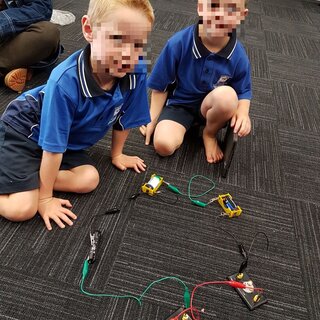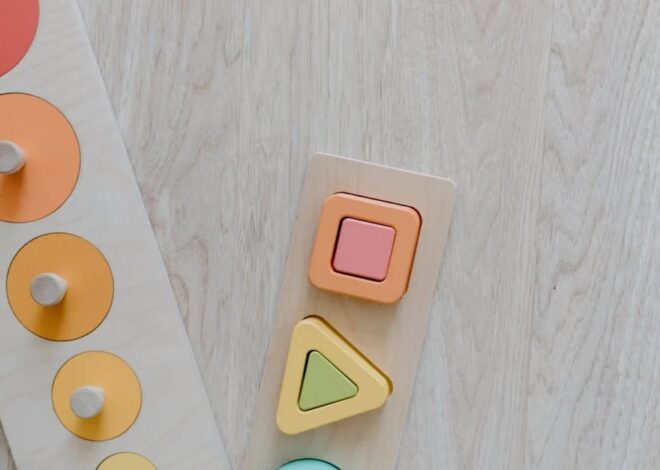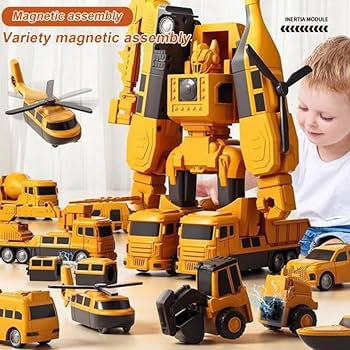
Beyond the Brick: How Modular Robot Toys are Revolutionizing STEM Education
The toy chest of today looks vastly different from that of a generation ago. Static plastic figures and simple building blocks have evolved into dynamic, interactive learning ecosystems. At the forefront of this revolution are modular robot toys—a groundbreaking fusion of physical construction and digital programming that is fundamentally changing how children learn about science, technology, engineering, and math (STEM). This isn’t just about building a remote-control car; it’s about designing, constructing, and programming an intelligent agent that can sense and interact with its environment. The latest Modular Robot Toy News signals a major shift, where play becomes a direct pathway to acquiring complex skills like coding, robotics, and computational thinking. This article provides a comprehensive technical deep-dive into this exciting world, exploring the underlying technology, the profound educational impact, and the market trends shaping the future of intelligent play. We will deconstruct these smart toys to understand how they work, why they are so effective as learning tools, and what parents and educators should consider when navigating this rapidly advancing landscape.
The Core Components: Deconstructing the Smart Building Block
At first glance, a modular robot kit might resemble a sophisticated set of LEGOs or K’nex. However, beneath the colorful plastic shells lies a complex network of electronics that gives these toys their “smarts.” Understanding these core components is key to appreciating their power and potential. The latest Robot Kit News highlights a trend towards increasingly powerful yet accessible hardware, democratizing robotics for a younger audience.
The Brain: The System-on-a-Chip (SoC)
The heart of any modern smart toy is its central processing unit, which is almost always a System-on-a-Chip (SoC). An SoC is a marvel of miniaturization, integrating a microprocessor, memory, power management, and wireless communication capabilities onto a single integrated circuit. This consolidation is what makes these toys compact, energy-efficient, and relatively affordable. For instance, many kits leverage low-power ARM Cortex-M series processors, which are powerful enough to run complex logic while being gentle on battery life.
A critical feature of these SoCs is integrated wireless connectivity, most commonly Bluetooth Low Energy (BLE). BLE is the ideal protocol for this application because it enables a stable, low-latency connection to a smartphone or tablet app with minimal power consumption. This allows a child to program their creation and receive real-time sensor data without being tethered by wires, a crucial element for uninhibited play and experimentation. This seamless connection is central to the latest Programmable Toy News and a key enabler of the entire user experience.
The Senses: A World of Sensors
If the SoC is the brain, then sensors are the robot’s eyes, ears, and sense of touch. The variety and sophistication of sensors are what elevate a simple toy to an interactive, environmentally-aware robot. The latest AI Toy Sensors News reveals an expanding array of affordable sensors being integrated into these kits.
- Proximity and Infrared (IR) Sensors: These allow the robot to detect obstacles, follow lines on the ground, or even receive commands from a remote control. A robot car can be programmed to navigate a maze without bumping into walls.
- Color and Light Sensors: These enable a robot to react to different colors or ambient light levels. For example, a child could program their creation to stop on a red line or activate a light when a room gets dark.
- Gyroscopes and Accelerometers: Often combined in an Inertial Measurement Unit (IMU), these sensors provide data on the robot’s orientation, tilt, and movement. This is essential for self-balancing robots (like a miniature Segway) or for creating gesture-based controls.
- Sound Sensors (Microphones): These open the door to voice-activated commands or programming a robot to react to a loud noise, a core feature in much of the recent Voice-Enabled Toy News.
The Body: Actuators, Motors, and Connectors
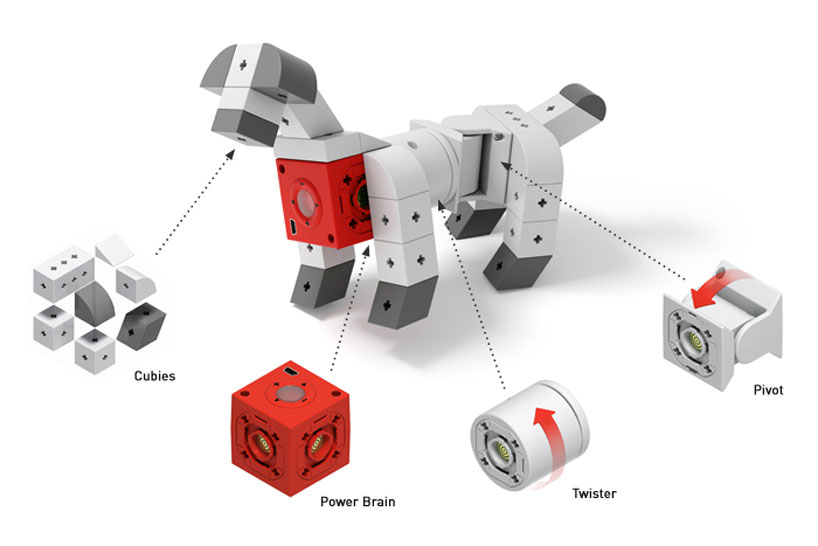
The final piece of the puzzle is the robot’s physical body—the components that allow it to move and interact with the world. This includes servo motors for precise rotational movement (like a robotic arm), DC motors for wheels, and actuators for gripping or pushing objects. The “modular” aspect is crucial here. The design of the connectors—whether they are magnetic, snap-fit, or screw-based—determines the ease of building and the structural integrity of the final creation. Good design encourages experimentation, allowing a child to quickly reconfigure a wheeled rover into a walking insect or a stationary catapult. This focus on physical creativity is a cornerstone of Robot Building Block News and AI Toy Customization News.
Bridging the Gap Between Physical and Digital Learning
The true genius of modular robot toys lies in their ability to seamlessly connect the tangible act of building with the abstract world of coding. They provide a physical manifestation of digital logic, making abstract concepts like loops, variables, and conditional statements concrete and understandable. This educational pathway is carefully designed to grow with the child, offering multiple layers of engagement.
The Software Ecosystem: AI Toy App Integration
The user journey almost always begins with a dedicated application, a central hub for building instructions, programming, and community interaction. The latest AI Toy App Integration News shows a clear trend towards highly polished, game-like interfaces that make learning to code feel like play. The programming environments within these apps are typically scaffolded:
- Direct Control: The simplest level of interaction, where the app functions as a sophisticated remote control, allowing the child to immediately play with their creation.
- Visual Block-Based Coding: This is the most common and effective entry point into programming. Inspired by platforms like MIT’s Scratch, it uses a drag-and-drop interface where code blocks representing commands (e.g., “Move Forward,” “If Obstacle Detected,” “Turn Left”) snap together like puzzle pieces. This visual approach eliminates frustrating syntax errors and allows children to focus on the logic of their program. This is the heart of the Coding Toy News movement.
- Text-Based Programming: As a child’s skills advance, many platforms offer a transition to text-based languages like Python or JavaScript. The app might show the text-based code equivalent of the visual blocks, helping to bridge the gap. This prepares them for real-world programming languages and tools.
A Scaffolded Learning Experience: A Case Study
Consider the learning journey of a 10-year-old using a modular robot kit.
- Day 1: The Build. She follows an in-app 3D tutorial to build a simple robotic car. She learns about gears, motors, and how the physical parts connect. She then uses the app’s remote-control feature to drive it around the living room, experiencing immediate gratification. This falls under AI Vehicle Toy News.
- Week 1: First Program. She moves to the block-coding interface. She drags a “Move Forward” block, a “Wait 2 Seconds” block, and a “Turn Right” block. She uploads the program via Bluetooth and watches her car execute the sequence perfectly. She has just written her first algorithm.
- Month 1: Introducing Sensors. She adds an ultrasonic proximity sensor to the front of the car. Now, she learns about conditional logic, using an “If-Then-Else” block. Her program now says: “IF distance to obstacle is less than 10cm, THEN stop and turn, ELSE continue forward.” Her car can now navigate the room autonomously. This is a practical application seen in AI Science Toy News.
- Month 6: Advanced Projects. Now confident in her skills, she disassembles the car and builds a robotic arm. She programs it to pick up specific colored blocks and sort them into piles, using both the color sensor and servo motors. She might even begin exploring the Python API to write more complex and efficient code.
The Evolving Landscape: AI Toy Innovation News and Trends
The modular robot toy market is far from static. Continuous innovation in hardware and software is pushing the boundaries of what these toys can do. Staying abreast of AI Toy Trends News is essential to understanding where the industry is headed.
The Rise of Artificial Intelligence and Machine Learning

The next frontier is the integration of accessible AI and Machine Learning (ML). While true general AI is a long way off, simple AI functionalities are already appearing. Some kits are introducing camera modules with on-board processing that can perform basic object recognition—identifying a pet, a face, or a specific symbol. This allows for more advanced programming challenges, such as building a “pet companion” robot that follows the family dog (a real-world example of Robotic Pet News) or a security robot that reacts when it sees a human face. Similarly, enhanced microphones and software are enabling more sophisticated voice commands, moving beyond simple keywords to more natural language interaction, a trend seen in Toy AI Assistant News.
Integration with AR and VR
Augmented Reality (AR) and Virtual Reality (VR) are set to further blur the lines between the physical and digital. AR Toy News points to apps that use a phone’s camera to overlay a digital world onto the physical robot. A child could see a virtual racetrack on the floor for their robot to navigate, or digital instructions could be projected directly onto the model during the building process. VR could be used to create complex simulation environments where a child can test their code on a virtual twin of their robot before running it on the real hardware, preventing potential damage and allowing for more ambitious experiments. This creates a rich, mixed-reality playground for learning.
Sustainability and Customization: 3D Printing and Open Source
A growing movement within the industry focuses on longevity and creativity. Many companies now provide the digital files for their components, allowing users with access to a 3D printer to create their own custom parts, repair broken pieces, or design entirely new modules. This taps into the maker movement and provides invaluable lessons in design and engineering. This trend, highlighted in Toy Factory / 3D Print AI News, not only enhances the value of the kit but also promotes sustainability. On the higher end of the spectrum, open-source platforms based on Raspberry Pi and Arduino allow for near-limitless expansion, bridging the gap between a child’s toy and a professional prototyping tool.
Navigating the Smart Toy World: Tips for Parents and Educators
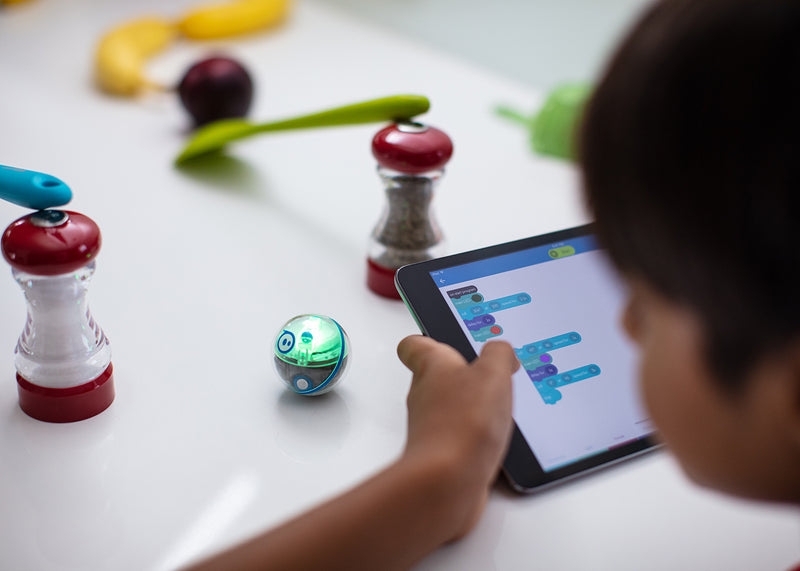
While the educational benefits are immense, the world of smart toys also presents new challenges. Making an informed choice and establishing healthy usage habits are crucial for a positive experience.
AI Toy Safety and Privacy
Any internet-connected device, especially one with a microphone or camera, raises valid privacy concerns. It is imperative to choose products from reputable brands that have clear and transparent privacy policies. Look for companies that are compliant with regulations like the Children’s Online Privacy Protection Act (COPPA) in the United States. Before purchasing, it’s wise to research the latest AI Toy Safety News and AI Toy Ethics News related to a specific brand. Best practice involves understanding what data is collected, where it is stored, and how it is used. Opt for toys that can function fully offline or where connectivity features can be easily disabled.
Choosing the Right Kit
The market is flooded with options, from simple snap-together circuits to complex humanoid kits.
- Age and Skill Level: Match the complexity of the kit to the child’s age and current abilities. A kit that is too simple will be boring, while one that is too complex will lead to frustration.
- Expandability: Look for a system with a wide range of available sensors and actuators. A platform that can grow with the child offers better long-term value.
- Community and Support: A strong community is a significant asset. Check for active online forums, user-submitted projects, and readily available tutorials. Reading up-to-date AI Toy Reviews News and watching video tutorials can provide invaluable insight into the user experience.
Conclusion: Building the Future, One Block at a Time
Modular robot toys represent a paradigm shift in educational play. By masterfully blending physical construction with digital programming, they demystify technology and empower children to become active creators rather than passive consumers. The core technology—powerful SoCs, versatile sensors, and intuitive software—provides a robust platform for teaching not just coding, but also the critical 21st-century skills of problem-solving, logical reasoning, and creative design. As innovations in AI, AR, and open-source customization continue to accelerate, the capabilities of these toys will only expand. The latest AI Toy Future Concepts News promises even more immersive and intelligent experiences. These are more than just toys; they are foundational learning tools, the building blocks for a new generation of engineers, programmers, and innovators who will shape our technological future.

